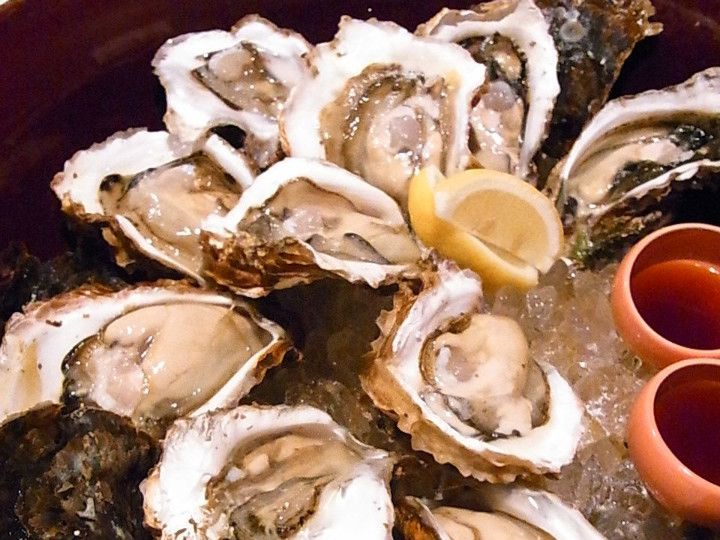Oyster Bar Ajikura


(Source: 食べログ)
Safe Bacteria-Free Oysters
The restaurant purchases oysters from the acclaimed oyster farm in front of it. The oyster farm cleans the oysters using a sophisticated ultraviolet sterilizer before delivering. There are only a few of these machines in Japan. The oyster is called "bacteria-fee oyster" and is very safe to eat even raw.

(Source: 食べログ)
Full Course Oyster Meal
The most popular item on the menu is Uramura Kaiseki (4,100 yen). The full course oyster meal consists of sauteed oysters, fried oysters and their special oyster rice cooked in a Kamado (Japanese-style cooking pot). You will fully enjoy the rich and plump oysters which are at the prime.

(Source: オイスターバー あじ蔵)
Enjoy Fresh Oysters Throughout the Year!
Another popular dish is Magagi Petite Kurahachi (three pieces - 870 yen). You can choose a preparation method from fresh raw or steamed. They offer fresh oysters throughout the year because they use different kinds of oysters such as rock oysters in the summer and the famous regional Uramura Oysters in the winter.

(Source: 食べログ)

(Source: 食べログ)
Safe Bacteria-Free Oysters
The restaurant purchases oysters from the acclaimed oyster farm in front of it. The oyster farm cleans the oysters using a sophisticated ultraviolet sterilizer before delivering. There are only a few of these machines in Japan. The oyster is called "bacteria-fee oyster" and is very safe to eat even raw.

(Source: 食べログ)
Full Course Oyster Meal
The most popular item on the menu is Uramura Kaiseki (4,100 yen). The full course oyster meal consists of sauteed oysters, fried oysters and their special oyster rice cooked in a Kamado (Japanese-style cooking pot). You will fully enjoy the rich and plump oysters which are at the prime.

(Source: オイスターバー あじ蔵)
Enjoy Fresh Oysters Throughout the Year!
Another popular dish is Magagi Petite Kurahachi (three pieces - 870 yen). You can choose a preparation method from fresh raw or steamed. They offer fresh oysters throughout the year because they use different kinds of oysters such as rock oysters in the summer and the famous regional Uramura Oysters in the winter.

(Source: 食べログ)





